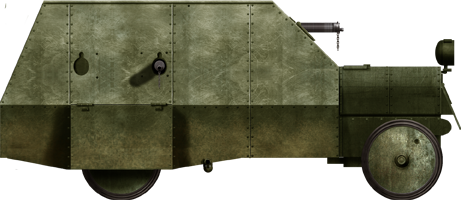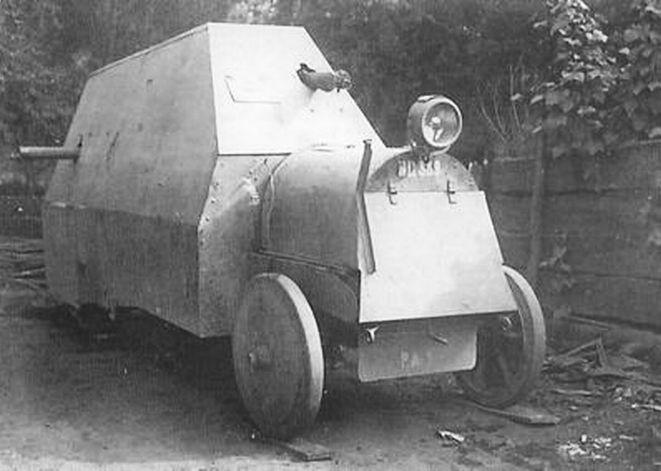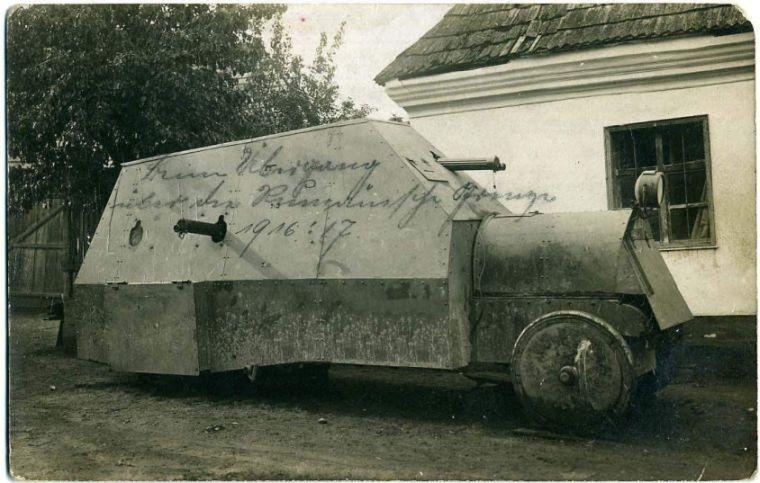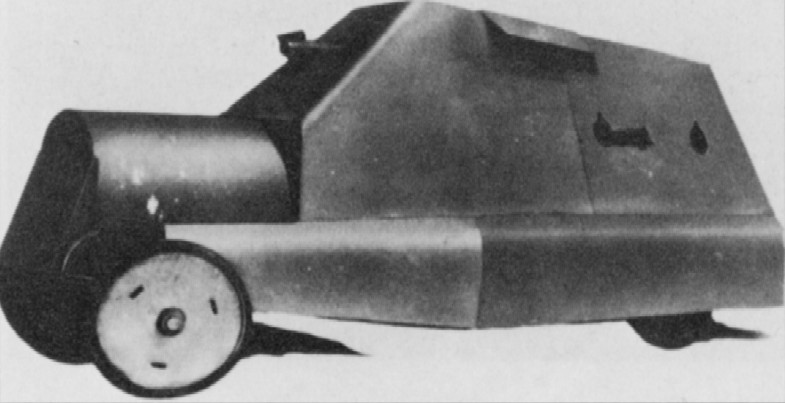One of the few Austro-Hungarian armored cars
The Austro-Hungarian army failed to see the potential of armored cars prior to the war. After some demonstrations, they decided against the use of armored cars as incompatible with current cavalry tactics and any military doctrine in existence. The empire, especially Austria, had limited industrial capabilities except a few renown manufacturers. The Army started to show interest in this type of vehicle after the outbreak of war. This was mostly due to the enthusiasm shown by the Russians and Italians, then opponents of the Austro-Hungarians. The matter progressed so slow that a young officer, Hauptmann Junovicz, decided to take the matter in his own hands.He devised an improvised vehicle, hand-built, on an existing chassis. The one chosen was the Fiat 40 PS lorry, a sturdy vehicle produced locally under licence. This vehicle was known as the "Junovicz armored car". Except for the crude, improvised Junovicz, another armored car, small and refined, carefully handcrafted, known as the Romfell was accepted into service.
Design of the Junovicz AC
The Junovicz looks relatively clumsy and unsophisticated at first glance. It was essentially a standard truck chassis with a slab-sided, boxy armored hull. This was made of a framework which held in place bolted armor plating, 7 mm (0.275 in) thick at the front and 5 mm (0.2 in) on the sides. The overall weight was estimated to more than 4 tons. Each was armed with two/three Schwarzlose Model 1912 cal 0.3 (7.62 mm) machine-guns. One was placed at the front of the vehicle, while the other one or two could be swapped between either of the four pistol ports on the sides. The crew probably consisted of 5-6 men depending on the armament carried. Its ordnance designation seems to have been Panzer Auto 1: P.A.1.Variants and wartime action
Three main variants are known:- the first three Junovicz were constructed on Fiat 40 PS chassis, delivered in 1915.
- a fourth one was built on a Bussing 36 PS chassis in 1917.
- a fifth was derived from a Saurer 34 PS chassis the same year.
Operational records are unknown. Due to the nature of the terrain they were engaged on (particularly in the Italian theater) it is more probable they have been engaged in the Balkans and Russia. There are few photos of the Junovicz, showing them painted in an uniform (presumably) standard light olive livery. It is probable that the 1917 versions were painted in a dull grey pattern, more available at that time. The photos shows no markings but a simple matriculation above the radiator. An account from 1918 tells us that a platoon of armored cars, the K.u.K. Panzerautozug No.1, was engaged on the Italian front, with one Romfell, two Junovicz, one captured Lancia IZ and one ex-Russian Austin. These were kept in reserve in the vicinity of Udine to be used later in the supposed future breakthrough at the Piave.
Links
WWI armored cars on Landships.infoJunovicz armored car specs | |
| Dimensions | 5.70 x 1.90 x 3.50 m (18.7 x 6.2 x 11.4 ft.in) |
| Total weight, battle ready | 4 tons |
| Crew | 5 (driver, commander, 2 machine-gunners, loader) |
| Propulsion | 4-cyl Gas. FIAT 12L, 40 bhp at around 2000 rpm |
| Speed | 35 kph (21 mph) |
| Range | 350 km (217 mi) |
| Armament | 2-3 x Schwarzlöse model 07/12 machine-guns |
| Armor | Maximum 7-5 mm (0.3-0.2 in) |
| Production -Fiat type | 3 |
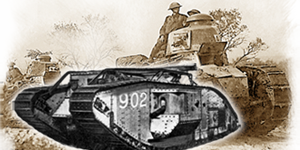
The Great War
 Austria-Hungary
Austria-Hungary Belgium
Belgium British Empire
British Empire France
France German Empire
German Empire Italy
Italy Russia
Russia USA
USAWW1 tanks posters


